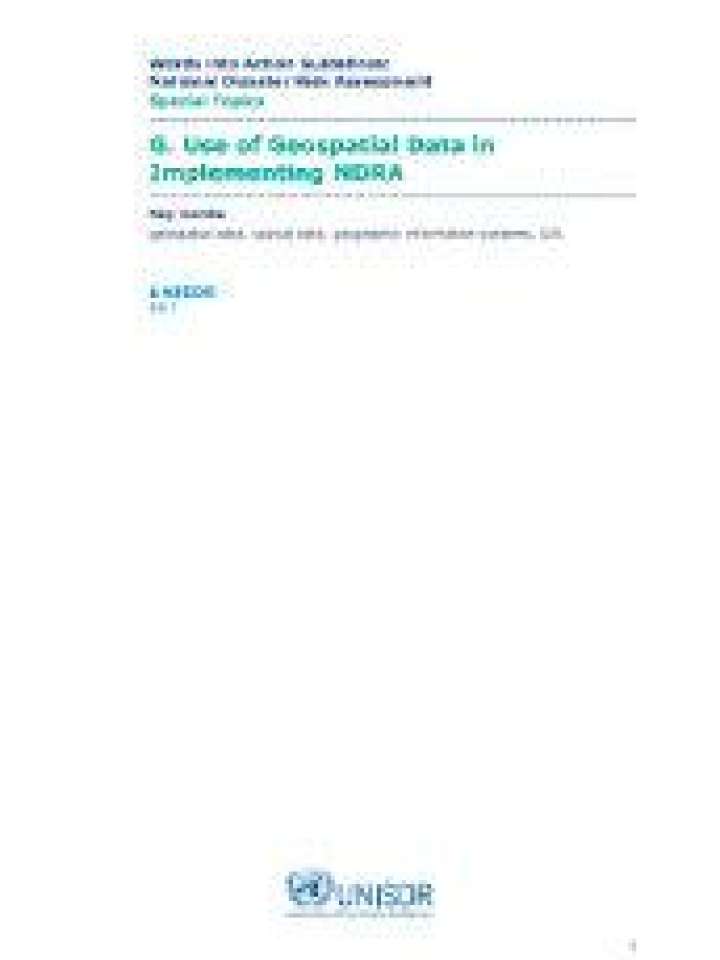Use of geospatial data in implementing NDRA
This document is the seventh in a series of special topics for consideration, as part of the Words into Action Guidelines on National Disaster Risk Assessment published by UNISDR. This section focuses on the use of geospatial information, also known as spatial or location information, for a national disaster risk assessment.
Geospatial information is crucial for understanding disaster risk. The physical processes causing disasters, or how they impact people and their assets, infrastructure and the environment, cannot be considered if their location on earth is ignored. For example, variations in topography and surface cover play a key role in determining the local flood hazard. Proximity to a tectonic fault influences the earthquake hazard. Spatial distribution of exposure (elements at risk), in proximity to a hazard, is a significant factor of disaster risk; a large magnitude earthquake in an unpopulated area may not cause any damage, whereas a smaller event under a population centre may have disastrous impacts.
